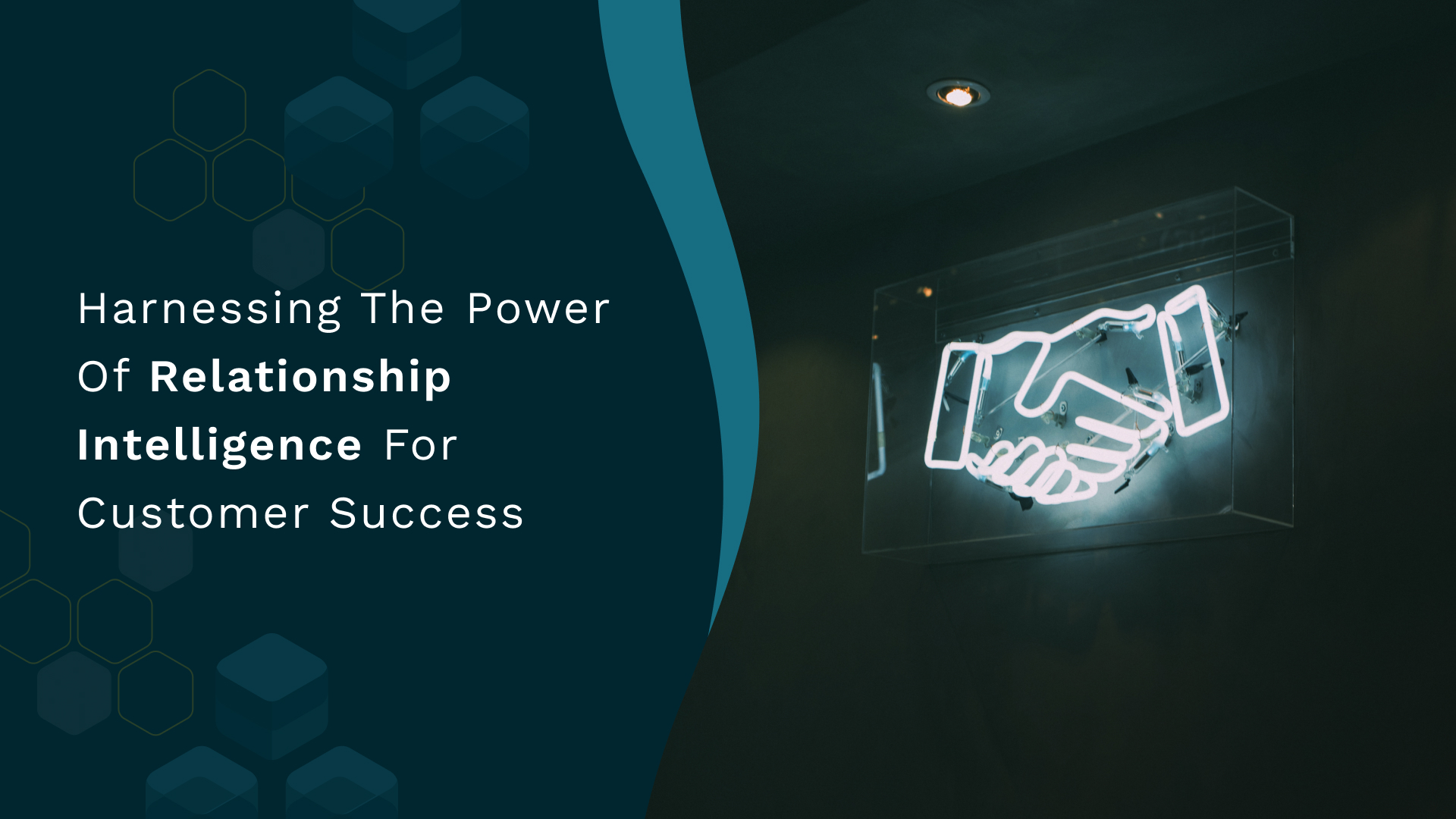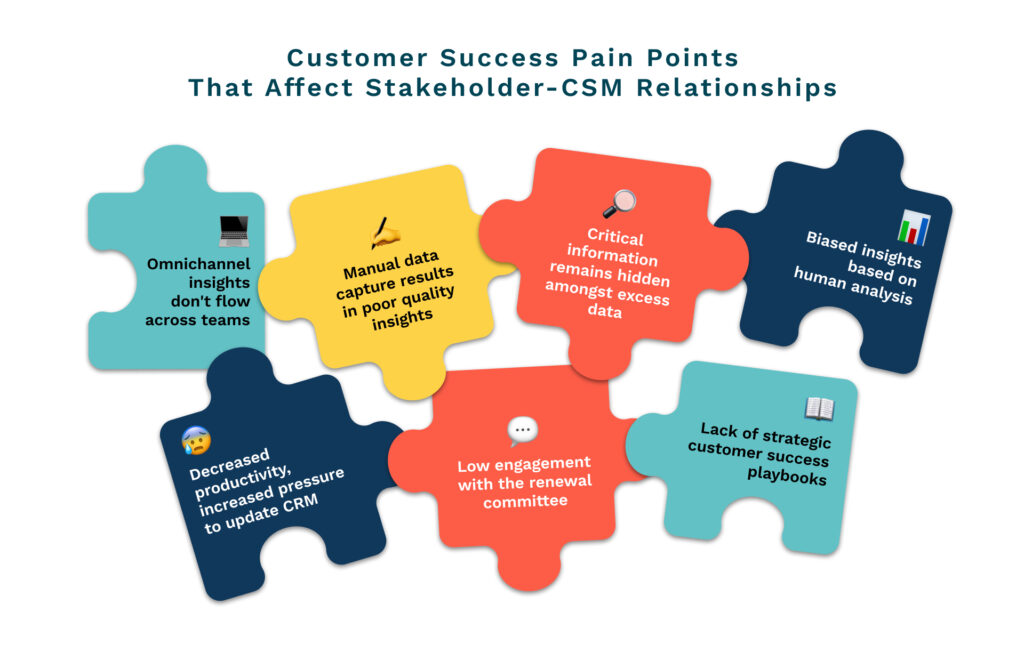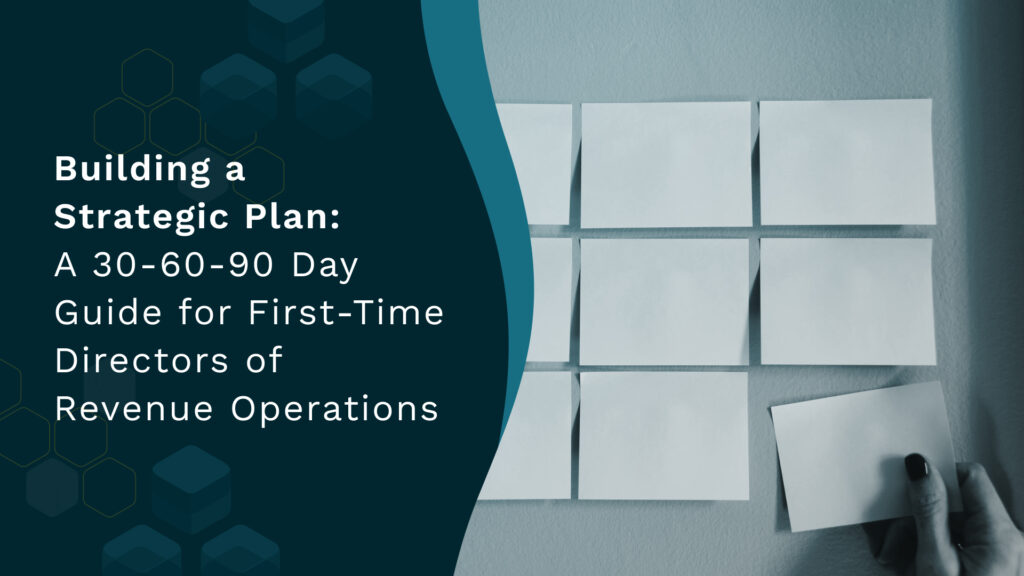
Harnessing The Power Of Relationship Intelligence For Customer Success
Explore how relationship intelligence boosts customer success, enhancing engagement, loyalty, and growth through strategic, data-driven insights.
In 2024, revenue leaders have foregone the “growth at all costs” concept. Instead, they’re intensely focused on sustainable growth—one that is resilient in an unpredictable business climate.
A key contributor to this growth process is getting customers to stick to you through thick and thin.
However, retention isn’t an easy task. It becomes particularly more challenging if customer success doesn’t know what customers need, what drives their business value from your solution.
This is where relationship intelligence steps in.
What Is Relationship Intelligence?
Relationship intelligence builds and solidifies customer relationships.
It utilizes data-driven insights from various points across the entire RevOps network.
This helps you dive into the nuances of customer relationships and human behavior. You can learn about the renewal committee’s buying habits and expansion opportunities.
Relationship intelligence uses AI and tech, taking a more behavioral analysis approach. It steers away from traditional techniques like relying on transactional insights.
There’s an increasing amount of data which fans the flames of ever-growing need for quality relationship insights. It assimilates critical information and supports your decision-making in real-time.
Relationship insights play a crucial role in building connections. Particularly, they can address key customer success challenges.
Customer Success Pain Points That Relationship Intelligence Can Solve

Today’s RevOps teams use several tools and channels to communicate with buyers. But they don’t always update all information in the CRM. Nor do they share omnichannel insights from these channels.
That’s because, despite automation, data capture is a manual affair. Not only is it time-consuming, but it’s also prone to critical errors.
CSMs end up working for the tools instead of the technology working for them.
At other times, they may capture too much data. It exhausts the system. Critical data that may change the course of deals remains undiscovered.
As a result, important data stays stuck in silos, lost and unfiltered.
Bad data within the system doesn’t throw up accurate intelligence. You don’t receive reliable information on at-risk accounts. Instead, the insights are dependent on human analysis.
It builds more pressure on reps to enter correct and complete data into the system. When more focused on updating the CRM, they have less time to cement relationships.
They don’t speak with all stakeholders in each renewal committee. So, if the champion decides to leave one day, you may lose the account due to missed engagement. CSMs may not know where the best stakeholder connections lie.
Lack of quality insights leads to an uninformed approach to retention and expansion.
Poor alignment on customer relationships between revenue teams adds to the problem. And a lack of strategic customer success playbooks affects business growth.
All because CSMs don’t have an in-depth analysis of customer relationships.
How Relationship Intelligence Enriches Customer Success
Relationship intelligence can enhance customer success capabilities. It introduces a level of rigor akin to marketing and sales. This amplifies its role in RevOps.
Here are 7 ways in which relationship intelligence refines customer success:
1. Reduced dependency on manual data capture
a. Automated data capture
You can put the “relationship” back into “customer relationship management” with the right insights.
Automated data capture ensures you have complete and accurate contact and account data. Plus, you can find and add missing information to existing contacts. It refines previously captured inaccurate data.
Relationship intelligence can also capture conversation data and review key discussion points.
Automated capture gives you clean data as the foundation for relationship-building. Reliable insights contribute to confident decision-making and unrivaled competitive advantage.
b. Improved CSM efficiency
When CSMs have no manual data capture to worry about, they can concentrate on developing customer relationships. They find customer accounts easily.
Plus, CSMs have historical data at their disposal. So, they know the renewal committee well when talking to them and come across as knowledgeable about the client’s business.
Automated data capture sets the stage for successful renewal right from the beginning.
2. Seamless cross-functional collaboration with a unified view
a. Putting an end to siloed data
Marketing and sales may store buyer data in silos (different tools that aren’t integrated). CSMs end up with incomplete information on customers. Nor do they know which use cases these clients are looking to solve.
It creates challenges even in simple day-to-day tasks such as ironing out product queries.
Moreover, buying committees and processes are complicated today.
Sharing complete and accurate contact level data guarantees CSMs don’t start on the back foot with clients.
Relationship intelligence enhances clean data. It gives you a unified view of contacts and activities in each account. This, it captures from several channels, including email, Slack, virtual conferencing, calendar, and more.
b. Context for each contact
You can review historical data and sync notes during ongoing meetings. For managers, this adds context to each meeting. For reps, it saves time on post-meeting tasks.
All teams can view this data, aligning their revenue goals across the customer journey.
It works in growth’s favor. Cross-functional collaboration increases key customer spend by over 200%.
c. Frictionless handover
Relationship intelligence gets to work right from when the prospect enters your funnel. It tracks the buyer’s journey from lead to cash and post-sales.
Teams can seamlessly hand over clients from one buyer stage to the next. You can also assign the best rep to each account based on relationship intelligence.
d. Refined account map
It also creates and refines the account map as the renewal committee evolves. For instance, the buyer may differ from the operational point of contact. Or new stakeholders get added to the committee over time.
You have to account for these changes to fortify the relationship.
Smooth and adaptive collaboration between revenue teams improves the customer experience.
3. Ability to track and influence renewal group activities
Source: Twitter
e. Tracking stakeholder interaction
Relationship intelligence gives revenue teams complete visibility at contact and activity levels. Your CSMs can spot single-threaded accounts. These are accounts where they’ve only engaged with one champion.
Managers can check each stakeholder interaction with the respective CSM. This insight supports engagement review and account planning (to improve retention).
Additionally, you can set alerts for granular insights on strategic accounts. This includes audience segments and specific industries.
f. Renewal management
Relationship insights notify you at least 30 days in advance when renewals are due. So, you can focus on at-risk and critical accounts to reduce churn.
While continued engagement with each account is the ultimate goal, you may not always achieve it. Early renewal alerts ensure CSMs can start engaging well before the renewal date. It avoids making the situation seem like you’ve missed these accounts.
g. Tracking executive engagement
The B2B environment is dynamic. Critical stakeholders (champions or executive sponsors) may leave the renewal committee. They may switch to other jobs or getting promoted.
Manually tracking these changes isn’t always possible. Relationship intelligence automates the monitoring process.
It identifies champions engaging with you. And it also determines alternate champions. So, if an existing champion leaves, you don’t lose the account.
You also get notified if key stakeholders give important meetings or QBRs a miss. CSMs can then improve engagement levels with these stakeholders.
Healthy engagement with all stakeholders in the renewal committee is crucial. It increases the chances of renewal.
4. Power to multithread to drive retention and expansion
q. Uncovering hidden stakeholders
Multithreading is about investing in nurturing the renewal committee. It maximizes your growth and revenue.
Sometimes, the point of contact and stakeholders using the solution may differ. You can discover these hidden stakeholders once you engage with the entire group.
Determine the stakeholders involved in the background operations. This lets you continue buyer persona development.
b. Uncovering hidden opportunities
As the client’s renewal committee and company change, new opportunities emerge.
Existing stakeholders may have specific use cases. These could be different from the ones discussed during the sales process. And new stakeholders come in with their own use cases, too.
Discover these hidden opportunities with relationship intelligence.
Skim through historical data and identify individual pain points. You can then present relevant use cases of how your product solves these problems.
Harvest each stakeholder’s data to build engagement. And ensure the entire committee is aware of your use cases. This influences the joint renewal decision taken by the committee in your favor.
5. Personalized omnichannel engagement
a. Omnichannel data processing
CSMs today use more than phones to get their tasks done. They may use:
- Chatbots
- Website
- Service platforms
- Slack (or other virtual messaging apps)
- Virtual calls
- Emails, and more.
Assimilating information from many touchpoints into one place can be overwhelming. Relationship intelligence handles and processes data from these omnichannel conversations.
b. Personalized engagement
It can extract insights to personalize engagement with multiple stakeholders across these channels. CSMs can make deeper human connections using technology. It’s possible even if there are fewer one-on-one physical interactions.
Source: Twitter
Personalization is a fundamental activity for customer success. It integrates critical data shared throughout the buyer journey. You can put this in action. Rather than a particular moment or task, you make personalization a continued process.
You get a deeper understanding of the customer’s most relevant use cases. You can action these insights further. Share each use case’s benefits with customers. They could be in the same industry or have a similar business model.
c. Real-time recommendations
Relationship intelligence analyzes each account’s behaviors, interests, previous interactions, demographics, and queries. It then shares the next best steps to set up a frictionless omnichannel experience.
Not just historical data. Relationship intelligence can also dig into customer feedback through several sources. They include surveys, emails, social media, and online reviews.
Based on these insights, you get real-time recommendations for meetings or issues. You can also direct customers to relevant resources for faster resolution.
Improve the consistency of communication across various channels and teams. You can set up a cadence that helps customer relationships grow organically. Over time, you go from vendors to strategic partners for your clients.
6. Predictive signals to predict churn and revive inactive clients
a. Churn prediction and prevention
87% of businesses today prioritize retention. Yet, many of them (64%) expect churn to increase in 2023.
Besides, it’s 5 times more expensive to attract new customers than keep existing ones.
There’s no two ways about it. Curbing churn is the next strategy you should be building. And the best way to fight it is to predict and prevent churn.
You can use relationship intelligence to fight churn by –
- Forecasting customer churn. Include those who leave without renewals and stop engaging with you.
- Using predictive analytics to identify at-risk accounts.
- Analyzing historical and cross-functional data and multithreaded relationships.
- Turning potential churn into opportunities by tracking champion movement.
- Suppose a champion does leave. Then you can start engaging the alternative advocate without missing a beat.
- If the previous champion moves to another account, connect them with the relevant CSM. But if they move to a target account, hand over essential information to sales.
b. Refreshing inactive clients
Look out for signs of inactivity in accounts. These may include:
- Reduced product usage
- Increased tickets
- Executives giving key meetings a miss.
Relationship intelligence ties historical and current data to identify inactive accounts. It also shares recommendations for reviving them. You can develop these suggestions further into win-back strategies.
These countermeasures for inactive accounts should be aimed at reviving them. For example, you could provide a relevant use case for a particular client. Or you can customize a feature or share an exclusive product upgrade offer.
Determine the KPIs and engagement traits influencing churn. It helps develop win-back strategies. You can then determine the next best steps with much more ease.
7. Refined customer success playbooks
Customer success playbooks need a periodical refresh to reduce churn. Optimize them to focus on critical accounts and personalize customer interactions.
It helps identify at-risk and high-value expansion opportunities better.
You can also use relationship intelligence to understand stakeholders better.
These insights could include:
- Intent levels
- Sentiments and preferences
- Account map
- Engagement levels
- Top use cases
- Changes in the buyer organization
- Daily customer success activities.
Additional data on buyer patterns across verticals and industries supports your optimization process.
Use this information to focus your efforts. Allocate the right resources to engage with the correct accounts at the right time.
Monitor the health of each account. Identify coaching gaps and opportunities quickly. And guide CSMs to adapt faster to changes.
Use relationship intelligence to mold your customer success culture. So that you fundamentally gravitate towards building deeper relationships.
Leverage AI for relationship intelligence
Driving value from vast chunks of data is a herculean task. The world generates more than 320 million terabytes of data every single day. Most of this data is unorganized and unstructured.
It becomes all the more difficult to find insights. Specifically, it’s difficult to gather actionable insights.
But AI can scour huge amounts of data. It learns how to use the information and generate operative intelligence.
Today, customers want their needs satisfied quickly. AI heeds their expectations by improving agility and adaptability. It automates relationship intelligence, transforming customer success.
Nektar’s solution uses AI for an innovative and powerful deep dive into your accounts to help you:
- Influence customer success, retention, and expansion efforts by discovering hidden opportunities.
- Sync historical data so you don’t miss any insights.
- Build and refine account maps for evolving buyer personas and new stakeholders.
- Track champion activities, identify alternate champions, and continue engagement without problem.
- Avoid key relationships from leaking through the revenue funnel.
- Increase engagement levels with the entire renewal committee having multiple stakeholders.
- Monitor CSM-customer interactions and provide timely guidance with real-time alerts and recommendations.

PUBLISHED BY






